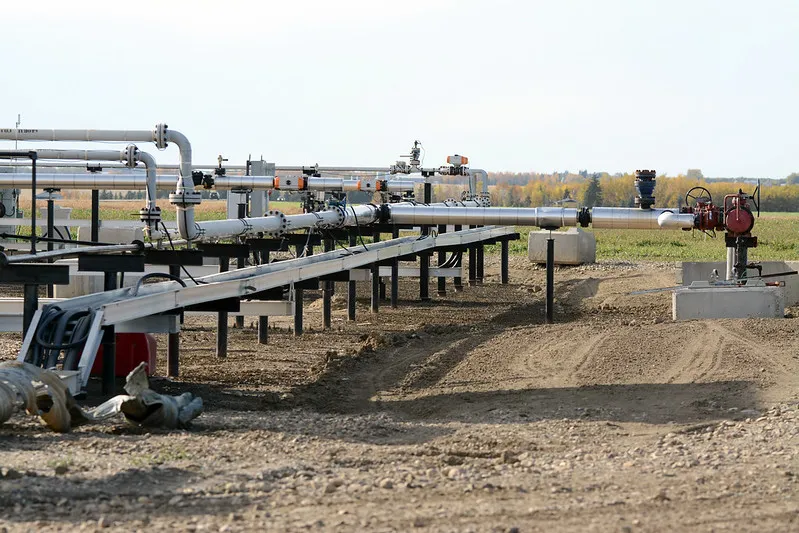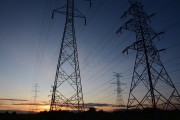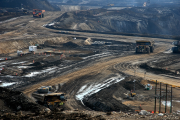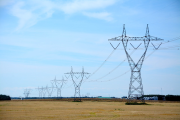As Canada’s new federal government settles in, we’re hearing a repeated commitment to Canada becoming a world-leading “energy superpower.”
In this moment of Canadian unity, as we grapple with challenging trade and sovereignty dynamics with the United States, what should it mean?
In the past, building more fossil-fuel infrastructure – in particular, pipelines – was an obvious choice, because everything was fossil-fuel-powered, and it seemed like it always would be. But now, Canadian decision-makers – laser-focused on enhancing our economic resilience and energy security – must look at global trends and make a call.
The oil-and-gas sector faces a sustained decline, with global demand for oil set to peak in the 2030s, if not sooner. Even demand for LNG is looking increasingly uncertain, with the majority of B.C.’s proposed LNG terminals set to come online in an oversaturated market full of low-cost competitors.
Then there’s whether oil and gas build-out benefits Canadians in the ways we’ve been told. When oil and gas profits skyrocketed as the pandemic subsided, new investment and jobs didn’t. Instead, companies increased the returns to shareholders.
What if we thought about how to position our economy for long-term economic prosperity and energy security by investing in the best bets, given global energy trends?
Where the world is going
In 2025, global investment in clean energy is set to double that of fossil fuels once again, $2.2-trillion to $1.1-trillion. In 2024, investment in low-carbon solutions – such as electrified transport and renewables – grew by 11 per cent, hitting a record $2.1-trillion. All of these trends are driven by dramatic declines in the costs of new power generation and electrification technology.
The global transition to clean energy is accelerating. Becoming an “energy superpower” means equipping ourselves to lead in that world.
Building out a clean, modernized electricity grid – removing barriers to interprovincial electricity transmission, and implementing a predictable regulatory system that favours sustainable development – would enhance our domestic energy security, allowing provinces like Ontario and Quebec to generate more of their own power.
That abundance of low-emitting power would also show the world that Canada is ready for business. As the U.S. pauses its offshore wind approvals, for example, Canada could be ready to provide the clean power that emerging and existing sectors need. Alberta, whose oil and gas sector is vulnerable to trade disruptions with the U.S., could benefit from removing barriers currently throttling investment in local renewable power, too.
The elephant in the room
In 2025, an “energy superpower” does not invest taxpayer dollars or slacken regulatory guardrails to build new fossil-fuel infrastructure. Some fossil-fuel projects, such as cross-country pipelines, would cost tens of billions and take a decade to build. No private-sector company has put their hand up to take on this type of infrastructure.
This doesn’t mean we stop oil and gas production. But it does mean addressing the elephant in the room: Oil and gas producers are responsible for about one-third of Canada’s national emissions for 5 per cent of GDP. Oilsands production is incredibly emissions-intensive, and those emissions continue to grow. In 2023, the oil sands alone emitted 80 per cent more emissions than Canada’s entire electricity system.
Last month in Calgary, Canada’s Energy and Natural Resources Minister Tim Hodgson claimed, “Every barrel of responsibly produced Canadian oil and every kilowatt of clean Canadian power can displace less clean, riskier energy elsewhere in the world.”
But can Canada claim to be a “responsible” oil and gas producer if the industry isn’t fulfilling its commitments to responsible production? This means reducing emissions, and quickly. But despite years of announcements, companies have not meaningfully invested in decarbonization absent policy requiring them to do so — despite millions of taxpayer dollars on the table for carbon-capture projects.
We clearly need an efficient and effective industrial regulatory regime, despite calls from industry to deregulate.
Let’s remember why regulation exists: to ensure stable, responsible and predictable energy development with as few negative impacts as possible; to ensure Indigenous communities are fully empowered in any development on their land; and to ensure project proponents produce enough benefits for Canadians to offset the environmental and social impacts of their operations.
If fast-tracking select industrial projects — as the federal government intends, and as B.C. is doing with 18 energy and mining projects — there’s an opportunity to improve our regulatory effectiveness. But red-tape reduction for its own sake would lead to new fossil fuel infrastructure built with lax environmental standards and inadequate constraints on pollution, and at high risk of becoming stranded assets in a declining global marketplace.






